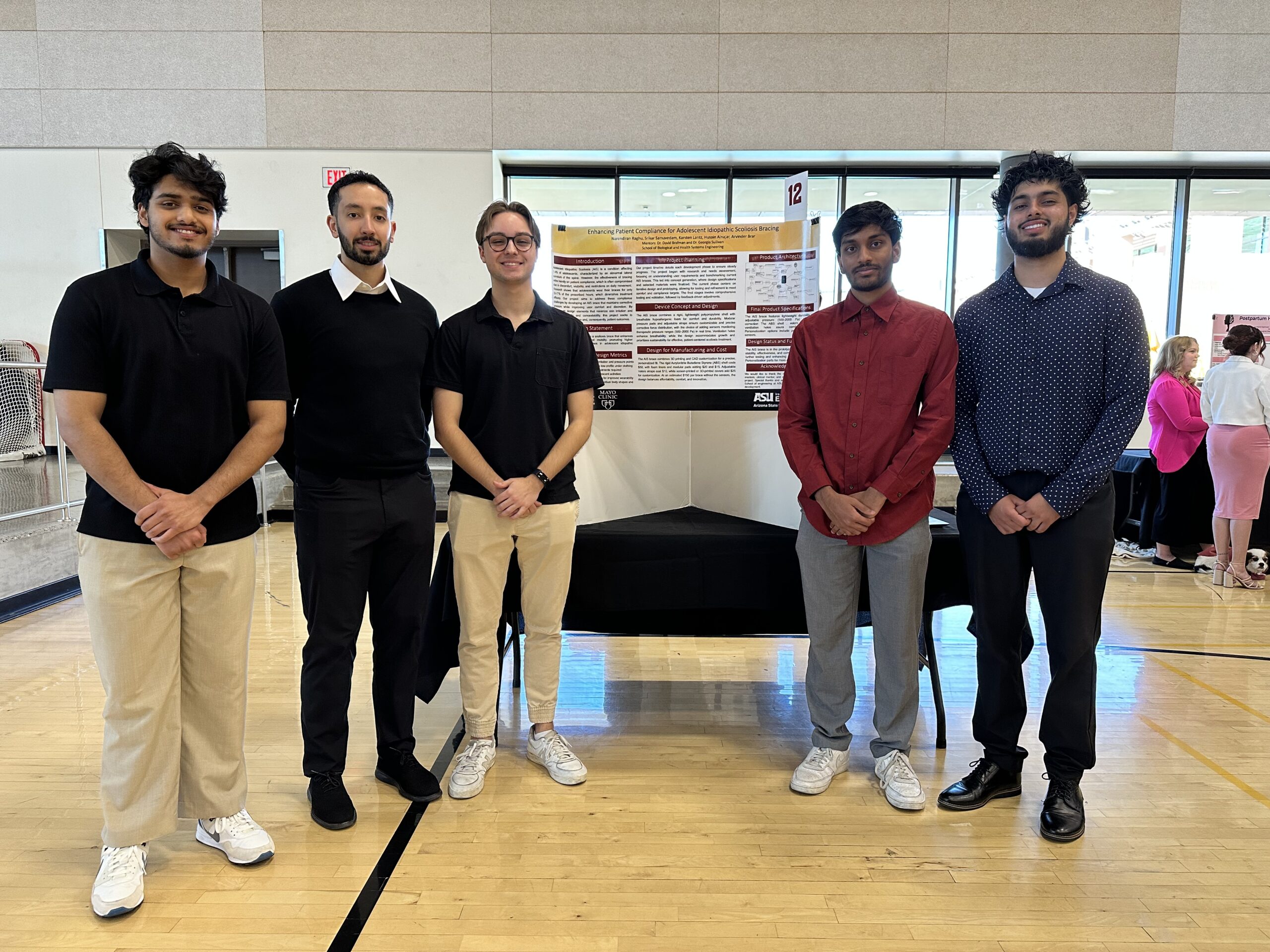
AIS Brace Improvement
Biomedical Engineering
Husain Alnajar, Arvin Brar, Karsten Lantz, Narendiran Raghu, and Srikar Samavedam
Abstract
Adolescent idiopathic scoliosis (AIS) affects 2-4% of children aged 10-18 globally, with untreated moderate to severe cases potentially leading to significant health complications. Bracing is a non-invasive method to prevent curve progression, but patient compliance remains low, often averaging just 33-77% of the recommended wear time. Discomfort, movement restrictions, appearance concerns, and psychosocial factors primarily drive this non-compliance. Our project aims to address these barriers by developing an adaptive AIS brace that enhances comfort, aesthetic appeal, and wearability, ultimately improving patient compliance and reducing the need for costly surgical interventions.
The proposed design integrates four key concepts: adjustable support straps, thermoregulating materials, hybrid composite construction, and customizable aesthetics. The adjustable support straps will provide individualized fit and comfort, ensuring stability without compromising flexibility. Phase-change materials and cooling fabrics embedded in the brace will regulate temperature, addressing heat-related discomfort, while hybrid composite materials like carbon fiber and breathable polymers such as silk will ensure durability and comfort. Aesthetic customization options, including colors and patterns, will reduce the stigma of brace-wearing and cater to the self-expression needs of adolescent patients. From a manufacturing perspective, the design will leverage modern CAD/CAM technology and 3D scanning for customization, ensuring scalability and cost-effectiveness. The use of lightweight yet durable materials will reduce manufacturing costs, compared to traditional braces. By enhancing comfort and compliance, this design offers a cost-effective solution to reducing the long-term financial burden of spinal fusion surgeries, which can range from $100K-$250K. This innovative approach will not only improve patient outcomes by increasing compliance but also align with market trends favoring non-invasive, patient-centric solutions in the growing scoliosis bracing market.
